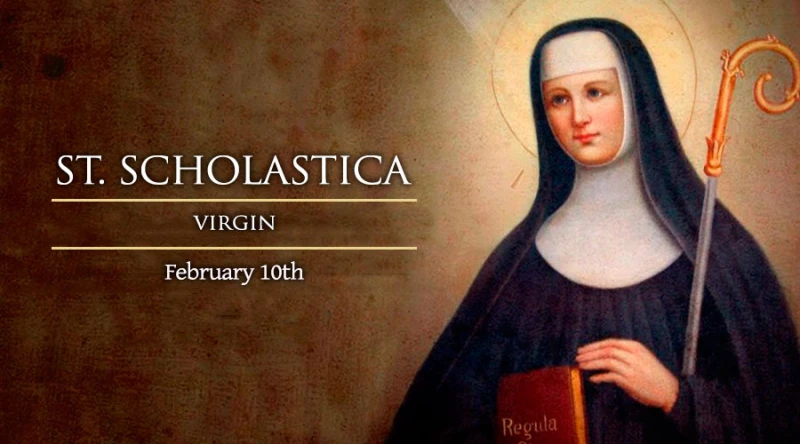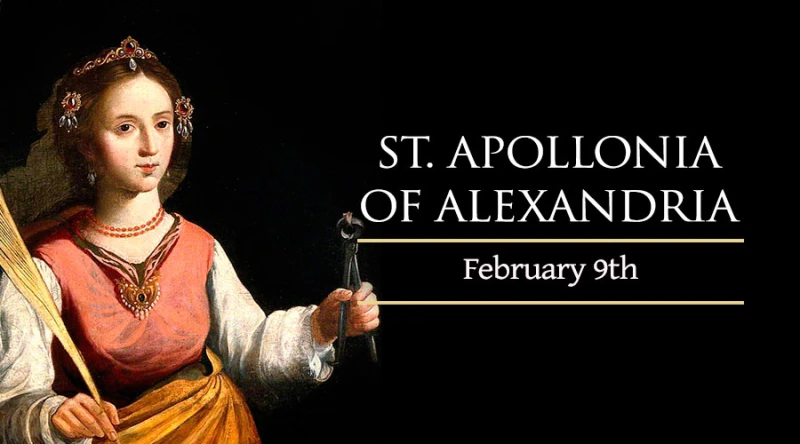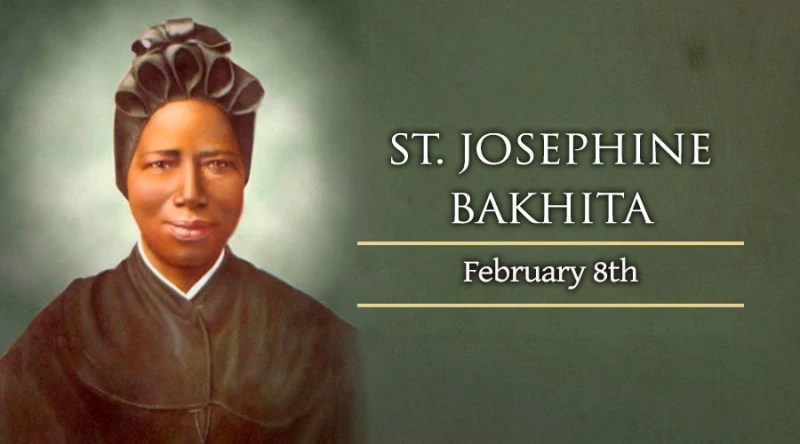St. Scholastica

St. Scholastica
Feast date: Feb 10
On Feb. 10, the Catholic Church remembers St. Scholastica, a nun who was the twin sister of St. Benedict, the “father of monasticism” in Western Europe.
The siblings were born around 480 to a Roman noble family in Nursia, Italy. Scholastica seems to have devoted herself to God from her earliest youth, as the account of Benedict’s life by Pope Gregory the Great mentions that his sister was “dedicated from her infancy to Our Lord.”
The twins’ mother died at their birth. When Benedict was old enough he left home to study in Rome leaving Scholastica with her father to tend the Nursian estate. In time, Benedict left his studies to live first as a hermit, and then as the head of a community of monks in Italy.
When Scholastica learned of her brother’s total dedication to the Lord, she was determined to follow his example. It is not certain that she became a nun immediately, but it is generally supposed that she lived for some time in a community of pious virgins. Some biographers believe she eventually founded a monastery of nuns there.
The brother and sister communities were about five miles apart. St. Benedict seems to have directed his sister and her nuns, most likely in the practice of the same rule by which his own monks lived.
Unlike her brother, St. Scholastica was never the subject of a formal biography. As such, little is known of her life apart from her commitment to religious life which paralleled that of her brother. Pope Gregory wrote that Scholastica used to come once a year to visit Benedict, at a house situated halfway between the two communities.
St. Benedict’s biographer recounted a story which is frequently told about the last such visit between the siblings. They passed the time as usual in prayer and pious conversation — after which Scholastica begged her brother to remain for the night, but he refused.
She then joined her hands together, laid them on the table and bowed her head upon them in supplication to God. When she lifted her head from the table, immediately there arose such a storm that neither Benedict nor his fellow monks could leave.
“Seeing that he could not return to his abbey because of such thunder and lightning and great abundance of rain,” Pope Gregory wrote, “the man of God became sad and began to complain to his sister, saying, ‘God forgive you, what have you done?'”
“‘I wanted you to stay, and you wouldn’t listen,’ she answered. ‘I have asked our good Lord, and He graciously granted my request, so if you can still depart, in God’s name return to your monastery, and leave me here alone.'” St. Benedict had no choice but to stay and speak to his sister all night long about spiritual matters — including the kingdom of heaven for which she would soon depart.
Three days later in the year 543, in a vision Benedict saw the soul of his sister, departed from her body and in the likeness of a dove, ascend into heaven. He rejoiced with hymns and praise, giving thanks to God. His monks brought her body to his monastery and buried it in the grave that he had provided for himself. St. Benedict followed her soon after, and was buried in the same grave with his sister.


